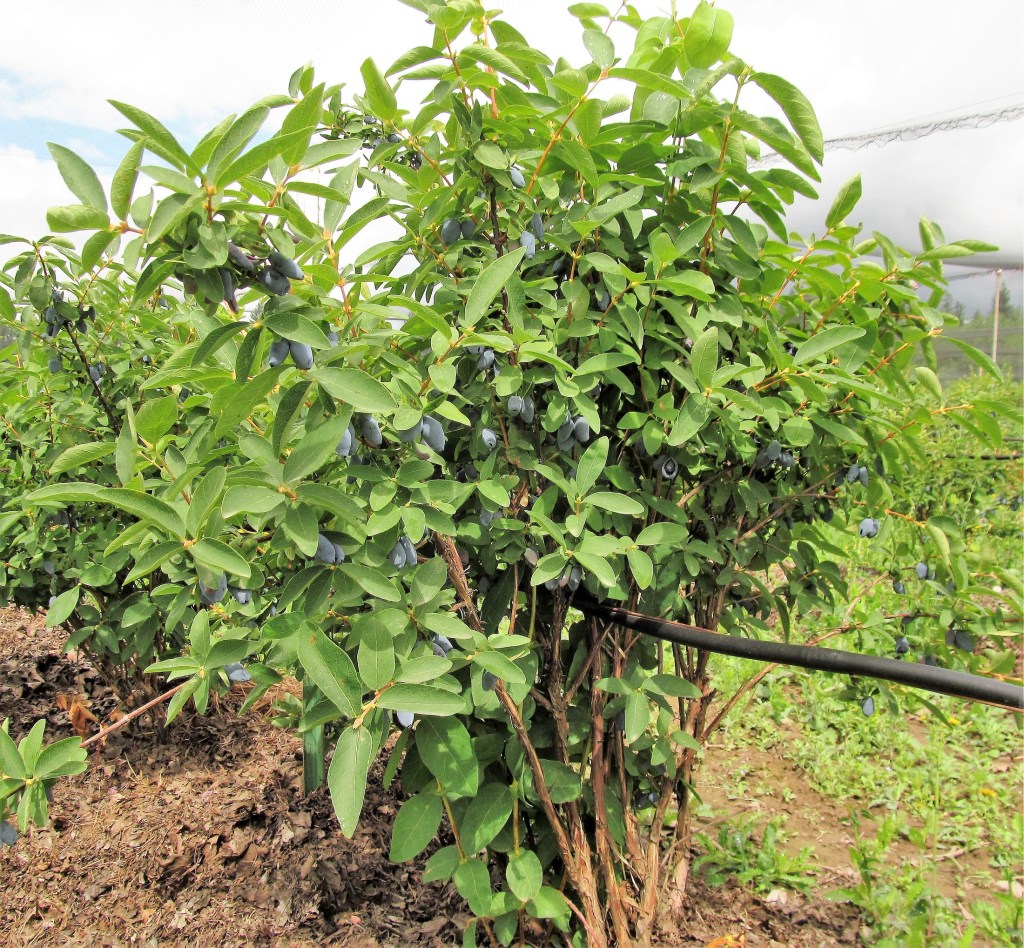Haskap Fast Facts
- Haskaps belong to the honeysuckle family; they are a woody shrub that does not sucker from the base and is not invasive.
- The name “haskap” is used to refer to the Japanese-derived cultivars of the lonicera caerulea subspecies emphyllocalyx, while the Russian varieties (subspecies edulis) are usually called “honeyberries.”
- Plants are adaptable to most soils, with a wide range of pH levels, but prefer a slightly acidic soil.
- Plants are cold-hardy plants, with blossoms able to withstand 20 degrees, but also adaptable to moderate temperature climates (Zones 2-7).
- Harvest is early, about the same time as strawberries.
- A healthy and properly pruned plant produces 6 to 10 pounds of berries after 5 years.
- The fruit can be used for baking, ice cream, jam, juice, liqueurs, and wine.
- Berries have more antioxidants than blueberries, black currants, or pomegranates.
- Plant at least two unrelated varieties that bloom at the same time for pollination.
- No significant diseases or pests have been noted, except for birds.
- Birds love them, protection systems are necessary in most locations.
- Healthy plants will live 25 years or longer.

